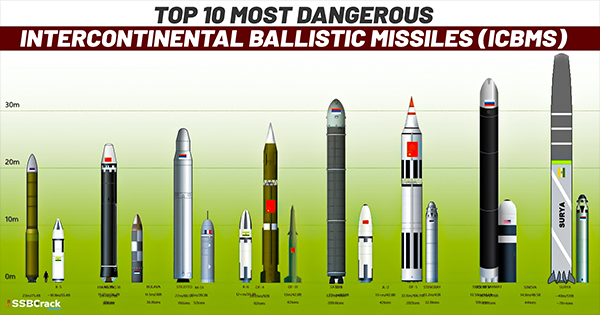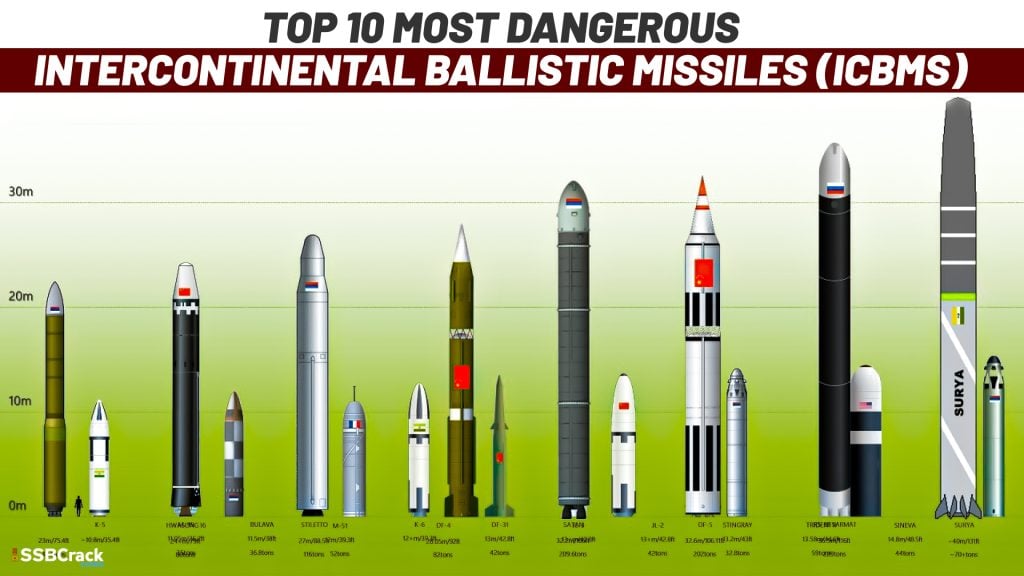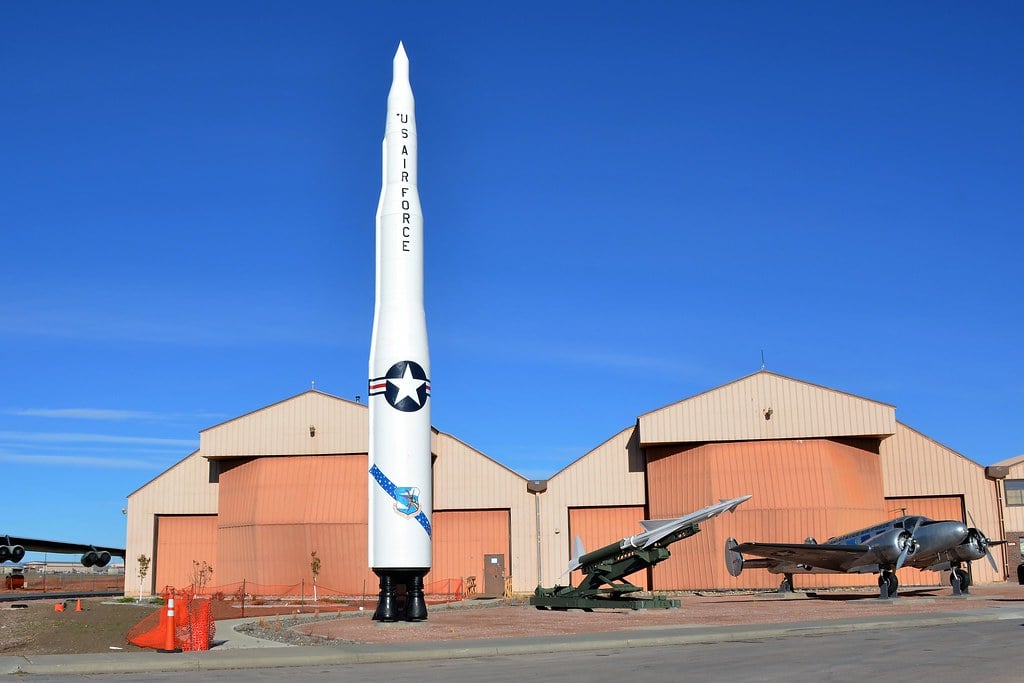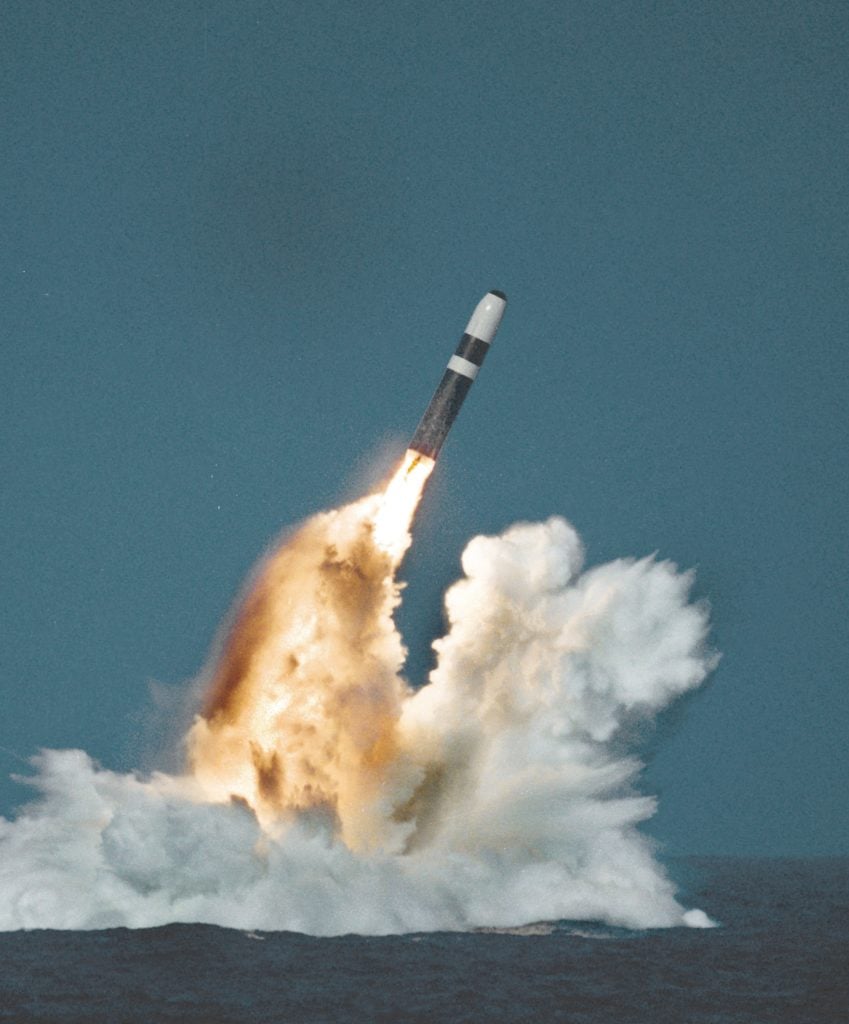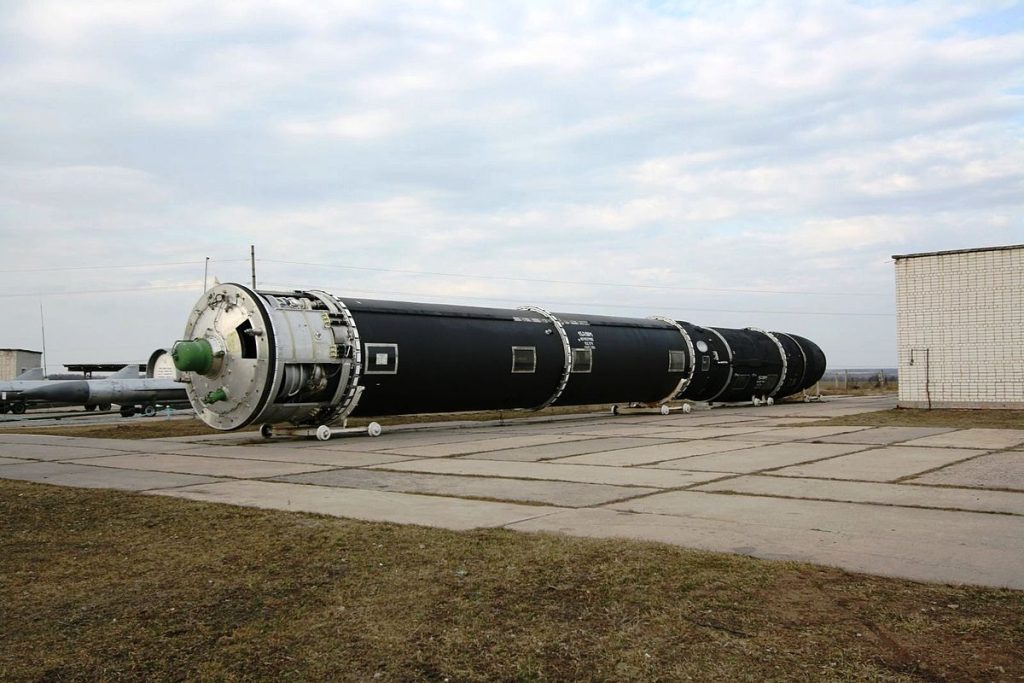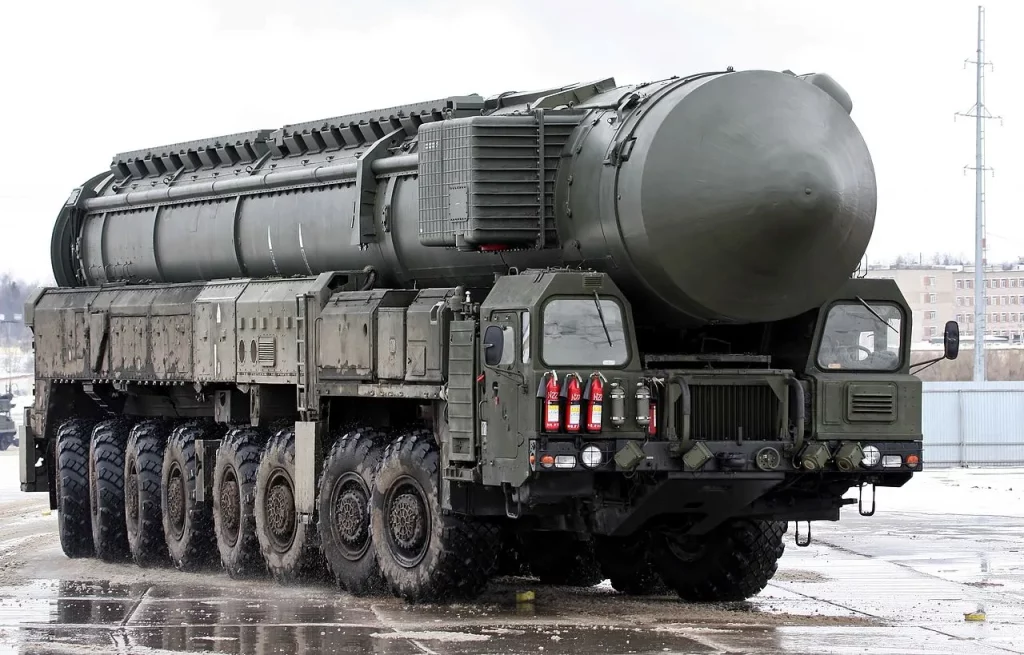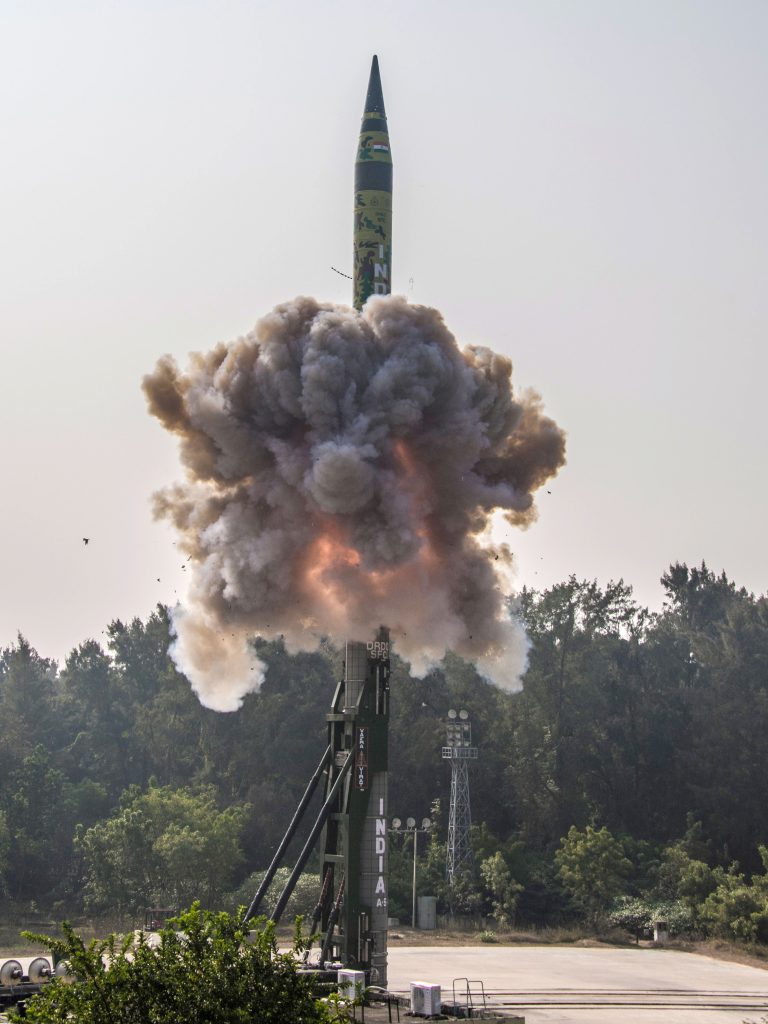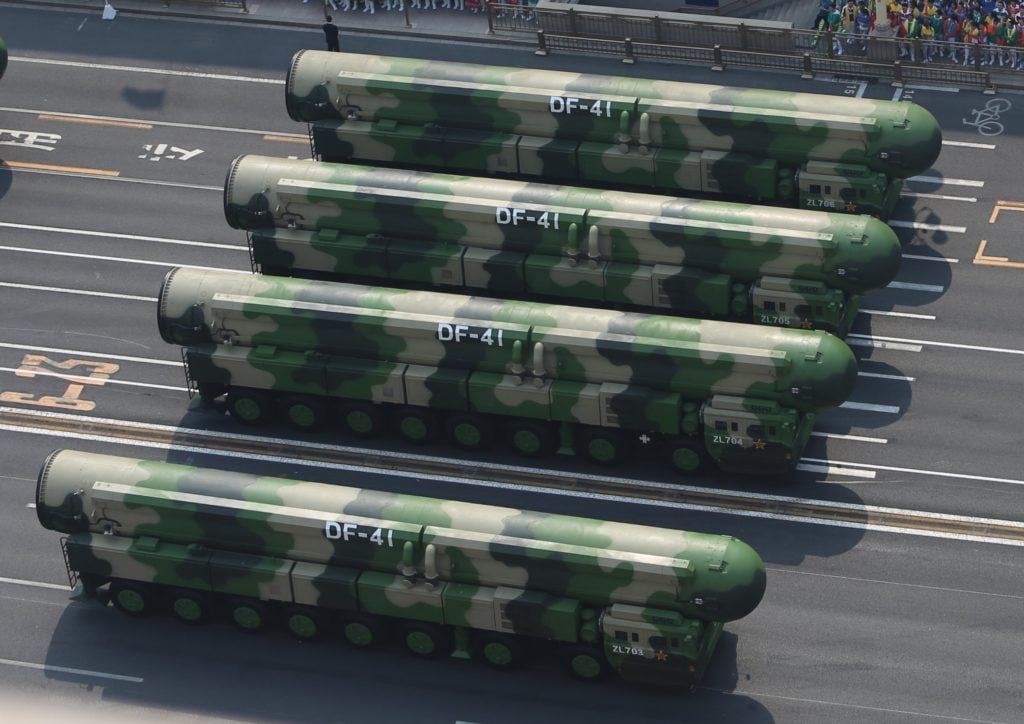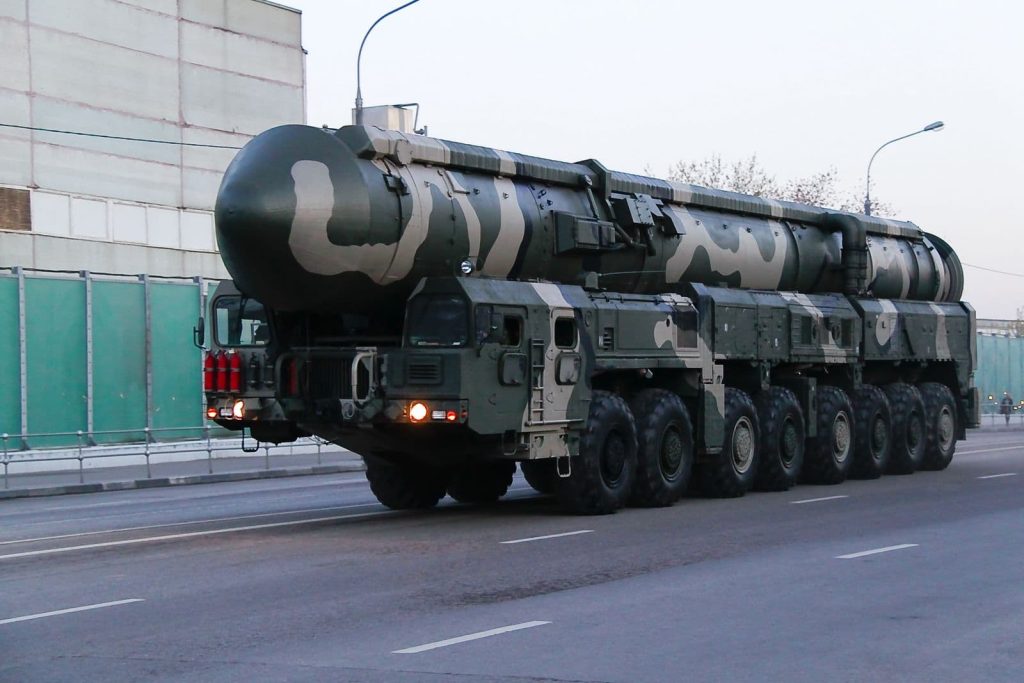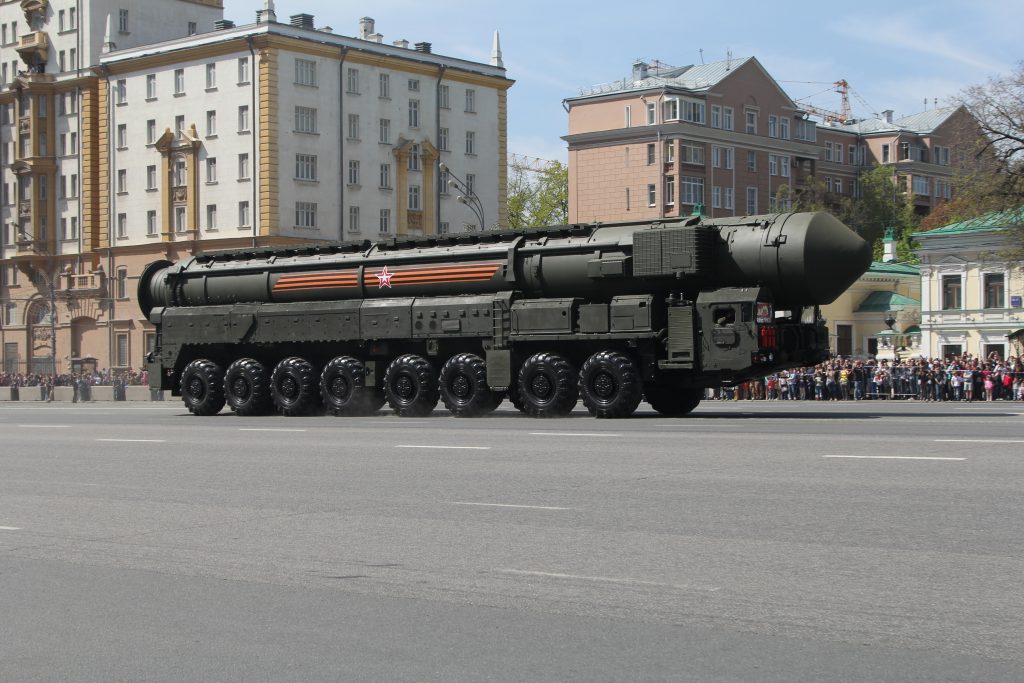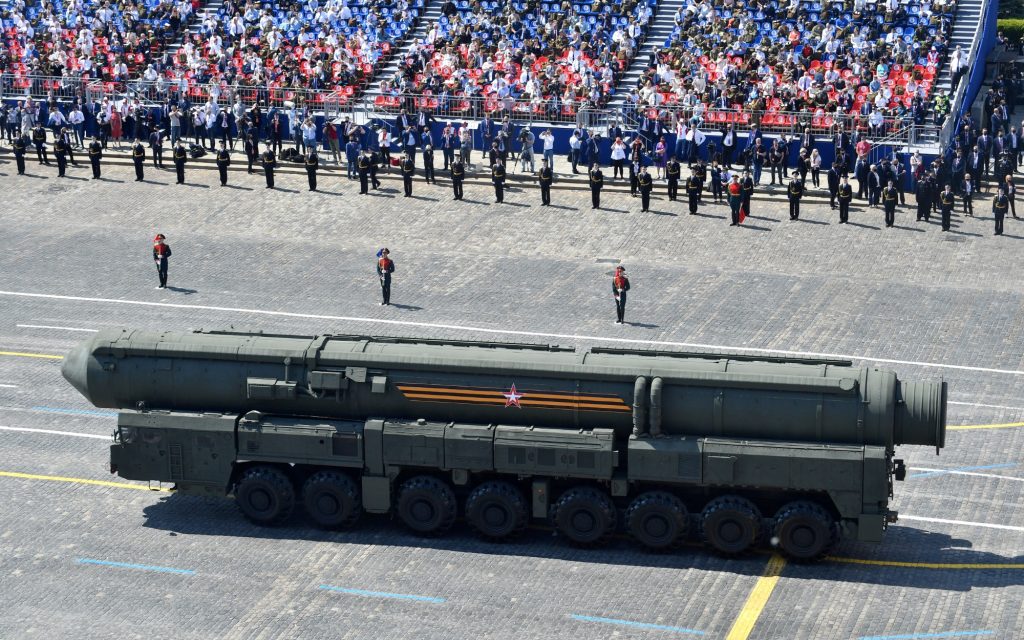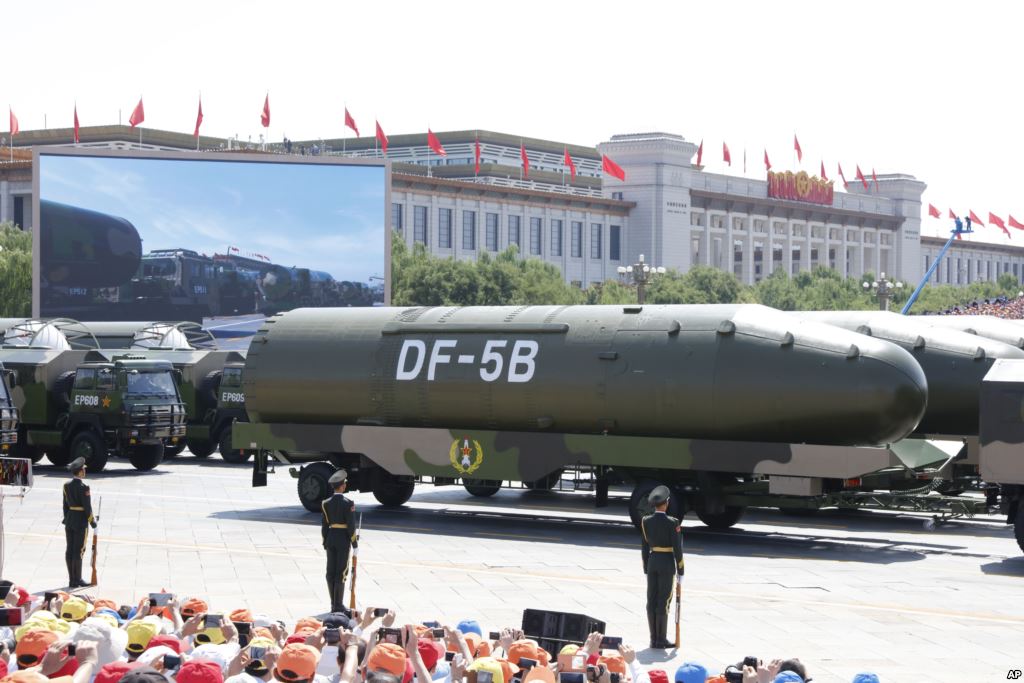The powerful long-range missiles known as intercontinental ballistic missiles (ICBMs) are built for transporting nuclear or conventional payloads over great distances. They are an important part of a nation’s strategic deterrence capabilities because they can travel thousands of kilometres or miles to reach their target.
Some of the distinctive features of ICBMs include:
- ICBMs can traverse continents and engage targets on the other side of the world thanks to their minimum range of about 5,500 km.
- ICBMs move quite quickly. They are virtually impossible to intercept and counter since they move at hypersonic speeds and may completely destroy their targets in a matter of minutes.
- Nuclear warheads, conventional explosives, or even multiple independently targetable reentry vehicles (MIRVs), which enable a single missile to deliver numerous warheads to separate targets, can all be carried by ICBMs.
- ICBMs can be fired from ballistic missile submarines (SSBNs), transportable launchers, or underground silos.
- ICBMs can be fired from ballistic missile submarines (SSBNs), transportable launchers, or underground silos.
- A nation’s nuclear triad, which also consists of strategic bombers and submarine-launched ballistic missiles, must include ICBMs as a vital piece. The power to launch ICBMs gives potential adversaries a credible and resilient second-strike capability, discouraging them from launching their own missiles.
Top 10 Most Dangerous Intercontinental Ballistic Missiles
LGM-30 Minuteman US
It’s an intercontinental ballistic missile from the United States. In the United States, the LGM-30G Minuteman III variant has been in service since 2018. Let us inform you that it has a 13000-kilometer range. It is capable of transporting three separate nuclear weapons that can strike three distinct targets. The United States only has one land-based intercontinental ballistic missile.
UGM-133 Trident II
A three-stage, inertially guided ballistic missile called the Lockheed Martin UGM-133 Trident II (D5) is fired from a submarine. Trident II missiles are installed on 14 nuclear-powered SSBN 726 Ohio Class submarines and British Vanguard Class submarines. The missile was used for the first time in March 1990, and the U.S. Navy had acquired all of its stock by 2007. In Sunnyvale, California, Lockheed Martin Space Systems constructs it. It has been in use ever since its initial deployment in March 1990. It has a range of 7500 to 12000 kilometres.
RS-28 Sarmat Satan 2
A three-stage, liquid-fueled missile with an 18,000 km range and a launch weight of 208.1 metric tonnes is known as the Sarmat. It’s a collection of space launchers and intercontinental meterstick missiles created by the Soviet Union during the Cold War. One of the most hazardous missiles in the world, which can carry three warheads was the first Soviet MIRV (multiple independently targetable reentry vehicle). Let us inform you that it has an 18,000-kilometer range. Additionally, it is claimed that these missiles are the most potent. The missile measures 3 meters in diameter and 35.3 metres in length.
R36M2 Voivode – Russia
The R-36m/SS-18 ICBM, a sizable, two-stage, tandem, storable liquid-propellant inertial guided missile, was developed to replace the SS-9 ICBM. It had an estimated range of 11,000 kilometres when it was launched in Russia. The basic structure of the missile is identical to that of the R-36, but it has been modernised with state-of-the-art hardware and more powerful motors. A gas-dynamic system pressurised the propellant tanks by opening appropriate ports for both the R-36M’s first and second stages. Due to this, it was no longer necessary to pressurise chemical tanks or use tank-based pressurised gases.
Agni-V
The Indian Defence Research and Development Organisation created the intercontinental ballistic missile. Agni-V is a missile in the Agni series. The DRDO produces the nuclear missile known as Swadesh for India. It includes the most advanced missile yet developed in India as well as other new technology. According to the Indian government, its range is 5000 miles. However, a lot of analysts, particularly Chinese academics, assert that the missile’s range is 8,000 kilometres. Agni-V will successfully undergo testing on December 15 from Odisha and be able to traverse more than 7,000 km. Agni V has a three-stage solid-fuel engine that allows it to strike targets up to 5,000 miles away with incredibly high precision.
DF-41
China’s most lethal intercontinental ballistic missile is this one. The DF-41 missile has a range of more than 14,000 kilometres, making it one of the longest-range weapons in the world. Because of this, it is capable of striking anywhere in Europe, Russia, or the United States within 20 to 20 minutes. About 10 individually targetable nuclear bombs that can attack any location on Earth are carried by it. It is thought to have been deployed in 2016 or 2017, while the precise specifications remain unknown.
RT-2PM2 Topol-M (SS-27 Sickle B) – Russia
One of Russia’s most contemporary and sophisticated intercontinental ballistic missiles (ICBM), the RT-2PM2 Topol-M, also known as the SS-27 Sickle B, was created to replace more traditional ICBMs in the country’s strategic missile forces. Early in the new millennium, the RT-2PM2 Topol-M entered service in the Russian Strategic Missile Forces and is a substantial mobility upgrade over the RT-2 PM Topol (SS-25 Sickle).
RS-24 Yars – Russia
Russian intercontinental ballistic missile (ICBM) “Yars” entered service for the first time in 2010. It may be fired from mobile launchers and silos, and it is intended to replace the outdated Topol-M rocket. The RS-24 “Yars” have a range of about 11,000 km and can transport multiple independently targetable reentry vehicles (MIRVs) with nuclear warheads. It is regarded as one of Russia’s most sophisticated ICBMs and is essential to the country’s nuclear deterrence plan. The RS-24 “Yars” is one of numerous ballistic missiles in Russia’s nuclear arsenal and is operated by the Russian Strategic Missile Troops.
RS-28 “Sarmat” – Russia
It is anticipated that the Russian RS-28 “Sarmat” intercontinental ballistic missile (ICBM), which is now under development, will replace the R-36M2 “Voyevoda” missile. The “Sarmat” is intended to be among the most potent and sophisticated intercontinental ballistic missiles in the world, with a range of roughly 18,000 km and the capacity to transport numerous nuclear warheads. Additionally, it is thought to be able to avoid missile defence systems.
DF-5 – China
Chinese intercontinental ballistic missile (ICBM) with two stages and liquid fuel is known as the DF-5 (Dong Feng-5). One of China’s first ICBMs, it has played a crucial role in the country’s nuclear deterrence capabilities. The missile contributed to China becoming a nuclear-armed state by being formally adopted into the People’s Liberation Army (PLA) Rocket Force (formerly known as the Second Artillery Corps). It is meant to ensure that China has the capability to undertake a retaliatory nuclear strike even in the case of a first-strike attack and has played a critical part in China’s nuclear deterrent strategy.
To crack the SSB Interview and join the Indian Armed Forces as an Officer, You can join our SSB interview live classes batch and we recommend you to Enroll SSB INTERVIEW ONLINE COURSE. Trusted by thousands of defence aspirants.

